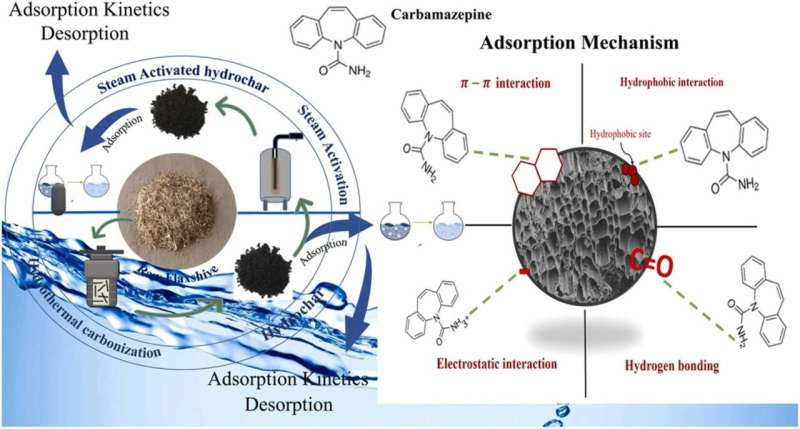This article has been reviewed according to Science X's editorial process and policies. Editors have highlighted the following attributes while ensuring the content's credibility:
fact-checked
trusted source
proofread
Cleaning contaminated water with flax shives

Using the Canadian Light Source (CLS), a team of researchers from the University of Saskatchewan (USask) has found that a common agriculture byproduct can treat waste water contaminated by antibiotics and other pharmaceutical chemicals.
Dr. Catherine Niu, a chemical engineering professor in USask's Department of Chemical and Biological Engineering, said there is considerable interest in finding more cost-effective ways to remove pollutants from water sources.
In this study, Niu and colleagues demonstrated that flax shives that have been treated with heat and steam adsorb the medication carbamazepine from wastewater. Flax shives are the material left after fiber is extracted from flax stems. The team's findings are published in the journal Chemical Engineering Research and Design.
"We saw there are so many agricultural byproducts generated that aren't effectively used," she said. "We wanted to explore the new use of those materials for water treatment."
Niu hopes that by creating adsorbents that are inexpensive and easily accessible, they can attract the attention of businesses looking for more efficient ways to treat wastewater.
"The project has generated results which show such methods have potential for future industrial applications," she said. "We're still optimizing the process to develop adsorbents."
Niu's team used spectroscopy analysis at the CLS to examine—at the subatomic level—how and why the carbamazepine binds to the surface of flax shives.
"It is very important to understand what causes this adsorption," Niu said. "Without the CLS, we get partial evidence. Using the near edge X-ray absorption fine structure spectroscopy, we get information to confirm our estimates."
More information: Aylin Aghababaei et al, An investigation on adsorption of carbamazepine with adsorbents developed from flax shives: Kinetics, mechanisms, and desorption, Chemical Engineering Research and Design (2022). DOI: 10.1016/j.cherd.2022.11.008


















